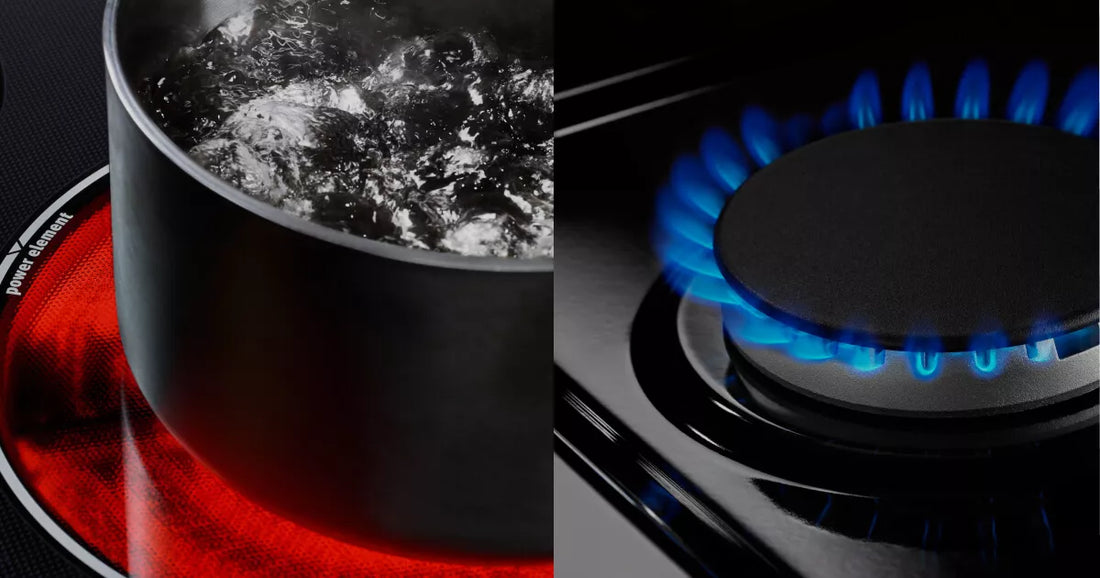
The Pros and Cons of Induction vs. Gas Cooktops
Share
Choosing between an induction cooktop and a gas cooktop can be a tough decision. Both offer unique benefits and drawbacks, and the right choice depends on your cooking style, kitchen setup, and personal preferences. At PRS Parts Inc., we’ve seen both types in action and helped countless customers make the switch—or stick with what works.
Here’s a straightforward comparison to help you make an informed decision.
🔥 Gas Cooktops
✅ Pros:
1. Instant Flame Control:
You can see the flame and adjust it instantly, giving you visual feedback and responsive temperature control.
2. Compatible With All Cookware:
No need to change pots and pans—gas works with cast iron, stainless steel, aluminum, and even copper.
3. Ideal for High-Heat Cooking:
Gas cooktops excel at stir-frying, charring, and simmering sauces over long periods.
4. Still Works During Power Outages:
If the power goes out, you can still cook—just ignite the burner with a match or lighter.
❌ Cons:
1. Less Energy Efficient:
Much of the heat escapes around the pan, making gas less efficient than induction.
2. Harder to Clean:
Burner grates, drip pans, and open flames mean more mess and longer cleanup times.
3. Hotter Kitchen:
Gas adds heat to the kitchen, which can be uncomfortable—especially in Hawaii’s warmer months.
4. Potential Safety Risks:
Open flames and gas leaks require caution and good ventilation.
⚡ Induction Cooktops
✅ Pros:
1. Super Fast Heating:
Induction uses electromagnetic energy to heat cookware directly, leading to rapid boil times and precise temperature control.
2. Energy Efficient:
Because heat goes straight into the pan, there's minimal heat loss. Great for saving energy and keeping the kitchen cooler.
3. Safe to Touch (When Off):
The cooktop surface stays cool to the touch except where it contacts the pan, reducing the risk of burns.
4. Sleek and Easy to Clean:
Flat, glass surface with no grates or burners—just wipe it down.
❌ Cons:
1. Requires Compatible Cookware:
You’ll need magnetic-bottom pots and pans (like stainless steel or cast iron). Aluminum, copper, or glass won’t work unless layered.
2. Higher Upfront Cost:
Induction units and compatible cookware tend to be more expensive initially.
3. Requires Electricity:
No cooking during power outages unless you have a backup power source.
4. Learning Curve for Traditional Cooks:
The precision of induction may feel unfamiliar to those used to flame-based control.
Which One Is Right for You?
| Feature | Gas Cooktop | Induction Cooktop |
|---|---|---|
| Heat Control | Visible flame, fast adjustments | Precise digital control |
| Speed | Moderate | Very fast |
| Ease of Cleaning | More difficult | Very easy |
| Safety | Open flame | Cool surface, auto shut-off |
| Cookware Flexibility | All types | Magnetic base only |
| Power Source | Gas (works during outage) | Electricity only |
Our Recommendation
-
Choose gas if you love traditional cooking methods, use a wide range of cookware, or live in an area with frequent power outages.
-
Choose induction if you want fast, safe, efficient cooking with a modern look and easy cleanup.
Visit PRS Parts Inc. at 540 Lagoon Dr. for authentic appliance replacement parts and expert repair assistance.
Whether you’re upgrading your kitchen or replacing a worn-out cooktop, we can help you choose the right parts and accessories for gas or induction systems. Need help figuring out compatibility or installation? Our team is always ready to assist.
Image Source: Maytag – Gas vs. Electric: Stove Comparison
